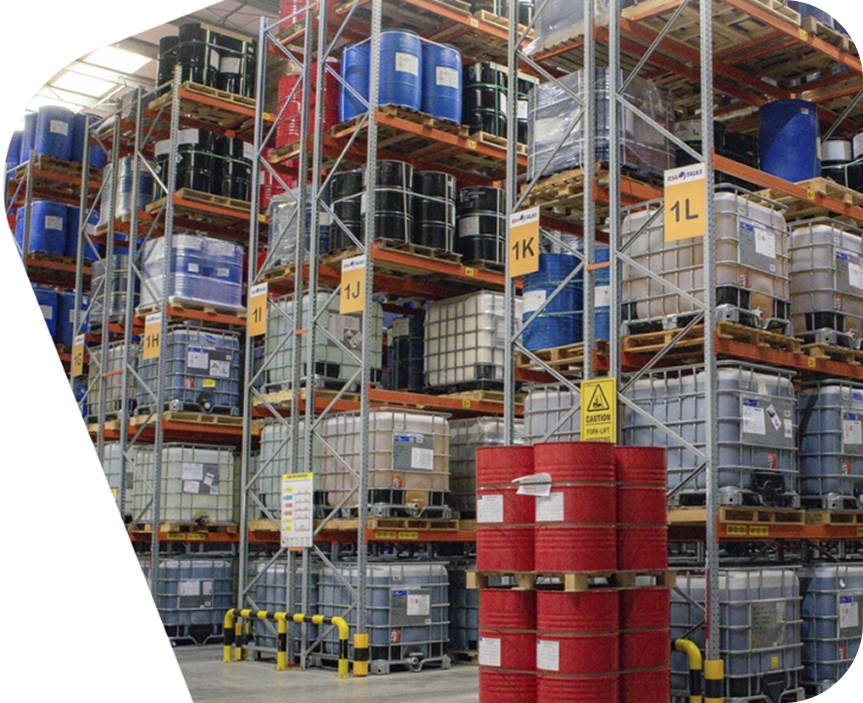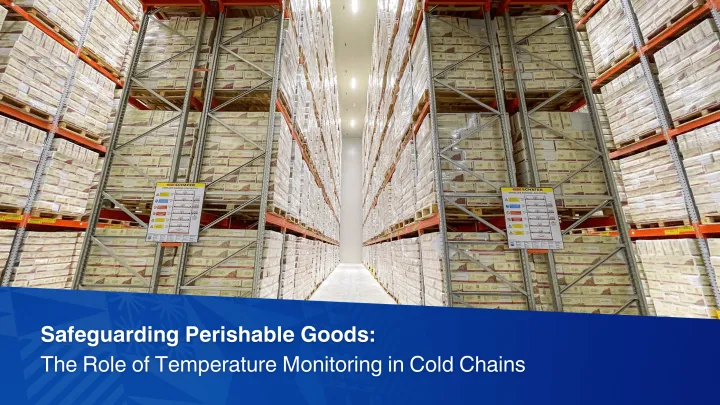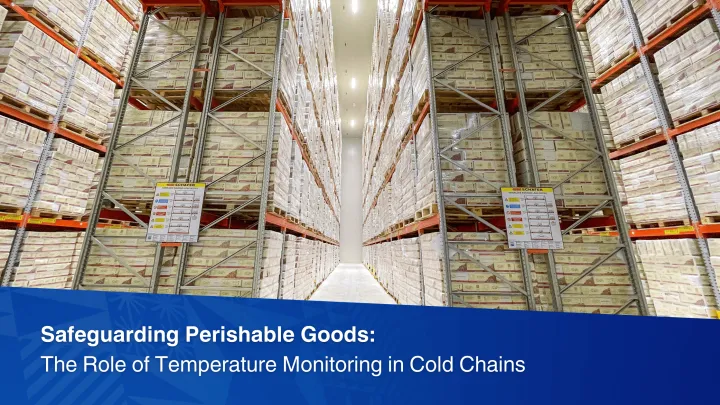Media
Key highlights, industry news, insights, and expertise around the world of logistics

Safeguarding Perishable Goods: The Role of Temperature Monitoring in Cold Chains

In the realm of logistics, particularly within the domain of cold chain logistics, temperature monitoring is paramount. Efficient temperature control is crucial for maintaining the integrity of temperature-sensitive products, ensuring they reach the end consumer in optimal condition. This article delves into the significance of temperature monitoring in cold chain storage, elucidating its indispensable role in modern logistics.
Understanding Cold Chain Logistics
Cold chain logistics refers to the transportation, storage, and handling of products that require a specific temperature range to maintain their quality and safety. This includes pharmaceuticals, perishable foods, and certain chemicals. The integrity of these products is contingent upon maintaining a consistent temperature throughout the supply chain.
The Role of Temperature Monitoring
Temperature monitoring in cold chain storage encompasses the use of various technologies and methodologies to track and control the temperature of products from the point of origin to the destination. This is not merely a logistical concern but a regulatory requirement in many industries. The failure to maintain proper temperatures can result in significant financial losses and, more critically, compromised product safety.

Impact on Perishable Goods
Perishable goods, such as fruits, vegetables, dairy products, and seafood, are another category heavily dependent on cold chain logistics. The quality and safety of these products are directly influenced by the temperature conditions they are exposed to during transportation and storage.
Shelf-Life Extension: Fruits and Vegetables: The quality and freshness of fruits and vegetables depend significantly on consistent temperature control. For example, studies show that exposure to incorrect temperatures during transport can lead to moisture loss, spoilage, and decreased nutritional value. Bananas, for instance, are particularly sensitive to cold temperatures, and freezing damage can occur if they drop below their ideal storage temperature (around 13-15°C).
Dairy Products: Dairy, such as milk, yogurt, and cheese, requires strict temperature regulation (typically between 2-4°C). Spoilage bacteria multiply rapidly in dairy products when exposed to improper temperatures, which can result in product spoilage or health risks. Maintaining a reliable cold chain prevents souring and curdling, extending the shelf life.
Seafood: Fish and seafood are particularly sensitive, as improper temperature control (above 4°C) leads to rapid bacterial growth, spoilage, and a higher risk of foodborne illnesses. Frozen seafood is even more temperature-sensitive, where fluctuations in temperature can cause thawing and refreezing, resulting in textural degradation and potential loss of quality.
Economic Losses and Wastage
According to research by the Food and Agriculture Organization (FAO), an estimated 14% of the world’s food is lost between harvest and retail, with a sizeable portion attributed to the failure of cold chain logistics. This is especially critical in perishable food sectors, where small deviations in temperature control can lead to massive waste.
In developing countries, the lack of adequate cold chain infrastructure causes huge losses in fruits and vegetables, particularly those like tomatoes and leafy greens. In India, for instance, 30-40% of fresh produce is lost post-harvest, due to inadequate refrigeration and transport solutions.
Regulatory Compliance and Food Safety
Regulatory bodies such as the U.S. Food and Drug Administration (FDA) and the European Food Safety Authority (EFSA) enforce strict guidelines on the temperature ranges that perishable goods must be maintained at throughout the supply chain to prevent contamination and spoilage. For instance, the Hazard Analysis and Critical Control Point (HACCP) system requires food companies to identify critical points in the cold chain where temperature deviations could result in product hazards.
The Global Cold Chain Alliance (GCCA) highlights that the cold chain’s role is vital not only in maintaining product quality but also in ensuring public health by reducing the risks associated with foodborne illnesses. As regulations become more stringent globally, failure to adhere to cold chain standards can result in product recalls, legal issues, and reputational damage.
Technology's Role in Cold Chain Logistics
Advances in technology have improved cold chain efficiency and monitoring. For example, real-time temperature tracking through IoT (Internet of Things) devices and sensors allows for continuous monitoring of perishable goods during transport. These technologies can immediately alert logistics managers to any deviations, allowing for quick interventions to prevent spoilage.
Data-driven logistics solutions also play a crucial role in optimizing cold chain routes and minimizing the time goods spend outside optimal temperature ranges. These innovations help extend the shelf life of perishables by reducing transportation delays and ensuring the integrity of temperature-sensitive products from source to destination.
Importance of Temperature Monitoring in Pharmaceuticals
The pharmaceutical industry is one of the most critical sectors relying on cold chain logistics. Many pharmaceuticals are sensitive to temperature fluctuations, which can degrade their efficacy and safety. Regulatory bodies, such as the Food and Drug Administration (FDA), mandate stringent temperature monitoring protocols to ensure the integrity of these products.
Challenges in Temperature Monitoring
Despite the advancements in technology, temperature monitoring in cold chain logistics presents several challenges. These include the need for continuous monitoring, the complexity of integrating various technologies, and the potential for human error in managing and interpreting data.
Conclusion
Temperature monitoring in cold chain storage is a critical component of modern logistics. It ensures the integrity and safety of temperature-sensitive products, from pharmaceuticals to perishable goods. By leveraging advanced technologies, such as IoT and automated monitoring systems, logistics managers can enhance the efficiency and reliability of their cold chain operations. Adhering to regulatory standards and implementing robust quality assurance protocols further underpin the importance of maintaining precise temperature control throughout the supply chain.
In an era where consumer expectations and regulatory demands are continually evolving, effective temperature monitoring is not just a logistical necessity but a strategic imperative for ensuring product quality and customer satisfaction.
Sources:
1. FAO, “Food Losses and Waste in the Food Chain: Cold Chain Logistics.”
2. GCCA, "Cold Chain Technologies and Impact on Food Safety."
3. FDA, "Seafood Safety and Cold Chain Requirements."
4. European Food Safety Authority (EFSA), "Cold Chain and Perishable Goods: Regulatory Perspectives."
5. Journal of Perishable Food Management, “The Importance of Temperature Control in Perishable Goods Logistics.”
6. Hazard Analysis and Critical Control Point (HACCP), Regulatory Standards on Perishable Goods.
7. Global Cold Chain Alliance (GCCA), “Cold Chain Regulations and Compliance.”



